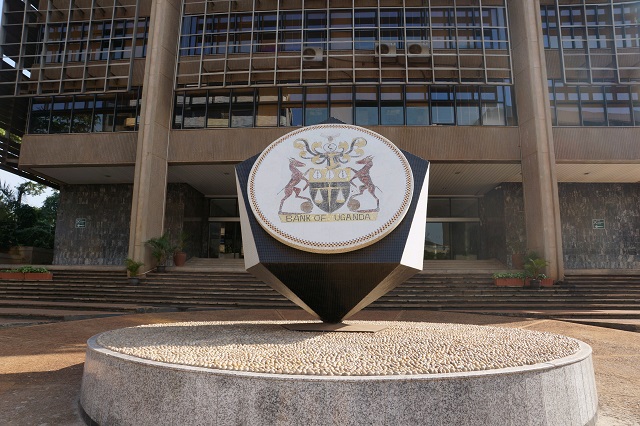
Private sector investment and strategic policies set to drive economic expansion
Kampala, Uganda | JULIUS BUSINGE | Uganda’s economic growth is poised for a notable upturn in 2025, supported by robust performance across key sectors such as energy, mining, agriculture, tourism, manufacturing, and information and communication technology (ICT).
This growth is expected to be further reinforced by the implementation of the National Development Plan IV (NDP IV), which will provide a framework for accelerated sectoral development and economic progress in both the short and medium term.
According to the Bank of Uganda, economic growth is projected to rise from 6.0% to 6.5% in the fiscal year 2024/25, with an anticipated increase to over 7.0% in the medium term. This growth trajectory reflects a positive outlook, driven by several pivotal factors, including strong private sector investment, government interventions, and the continued recovery of the global economy.
Several factors underpin Uganda’s growth forecast, beginning with the government’s focused investment in critical sectors. Agriculture, which has long been a backbone of Uganda’s economy, stands to benefit from favorable weather conditions, supporting productivity in key crops such as coffee, maize, and bananas. Government programs aimed at enhancing agricultural output will further contribute to the sector’s recovery and growth.
The extractive industry, particularly oil and minerals, is expected to see significant growth. With new investments and the commencement of oil exports projected for the 2025/26 fiscal year, Uganda is set to tap into a wealth of resources. The continued exploration and development of Uganda’s oil fields, combined with investments in the mining sector, particularly in lithium and cobalt, are anticipated to bring long-term economic benefits. These developments will not only generate export revenues but will also create jobs, stimulate local industries, and promote infrastructure development, contributing to the overall economic growth.
Mining & tourism to support growth
In the manufacturing sector, ongoing investments in industrialization and value-added processing will continue to provide new opportunities for both local and international businesses. As Uganda’s production capacity grows, the sector is expected to enhance its contribution to GDP and create sustainable employment.
The tourism sector also remains a key growth driver, with government efforts to position Uganda as a top destination for both leisure and business tourism. Investments in infrastructure, particularly in transport and hospitality, are expected to attract more visitors, bolstering foreign exchange earnings and enhancing Uganda’s global competitiveness.
Information and communication technology (ICT) continues to be a dynamic and fast-growing sector. As digital transformation accelerates, Uganda is witnessing the development of a thriving tech ecosystem, particularly in fintech, e-commerce, and digital services. These innovations are expected to attract more foreign direct investment (FDI) and improve access to critical services, driving further growth in Uganda’s economy.
Risks and upside potential
While the overall outlook remains positive, there are risks to Uganda’s growth prospects. Tighter domestic and external financing conditions could slow private sector credit growth, impacting aggregate demand and limiting business expansion. The ongoing geopolitical instability and global supply chain disruptions could exacerbate external risks, further dampening global trade and investment flows. Adverse climatic conditions, including droughts or floods, could also threaten agricultural output, which would impact overall productivity and export earnings.
However, the upside potential remains strong. A favorable global environment, characterized by increased demand for Uganda’s exports—particularly in oil, minerals, and agricultural products—could drive faster-than-expected growth. If weather conditions support a strong agricultural output and investments in the extractive industries meet their projected milestones, Uganda could experience economic growth that exceeds current forecasts.
Inflation is expected to remain below the 5% target for the 2024/25 fiscal year, driven by stable domestic demand, reduced imported inflation, and relative exchange rate stability. While inflation is likely to experience a moderate rise in the early months of 2025 due to seasonal factors, it is expected to stabilize around the target by the second quarter of the year. The Bank of Uganda will need to monitor these dynamics closely to ensure inflationary pressures remain in check.
Upside risks to inflation include higher-than-expected domestic growth fueled by investment in the extractive industries, as well as adverse weather conditions that could disrupt food production. Additionally, global inflationary pressures and volatility in capital flows may exert upward pressure on inflation, particularly through exchange rate depreciation.
Conversely, inflation could trend lower than expected due to factors such as exchange rate appreciation following the anticipated start of oil exports in FY 2025/26 or subdued global inflation trends. The Bank of Uganda’s monetary policy will play a crucial role in navigating these risks and ensuring price stability.
The exchange rate is projected to remain relatively stable in 2025, supported by anticipated inflows from export earnings and foreign direct investment. However, global economic conditions and domestic demand for imports will continue to influence exchange rate fluctuations.
Relatedly, interest rates in Uganda in 2025 will be heavily influenced by the monetary policy decisions of the Bank of Uganda. The central bank will focus on balancing the need for economic growth with the imperative of maintaining price stability. Adjustments to the Central Bank Rate (CBR) will be closely linked to inflationary pressures, fiscal policy dynamics, and external economic conditions. The Bank of Uganda’s approach will aim to maintain a stable financial environment conducive to investment and growth.
Opportunities and challenges
Uganda’s economic outlook for 2025 is therefore characterized by a blend of significant opportunities and challenges. Key sectors such as energy, mining, agriculture, and ICT are set to drive growth, while strategic government policies and investments will further catalyze progress. However, external risks—including geopolitical instability, global inflationary pressures, and climatic variability—will require careful management to safeguard the country’s growth trajectory.
 The Independent Uganda: You get the Truth we Pay the Price
The Independent Uganda: You get the Truth we Pay the Price



